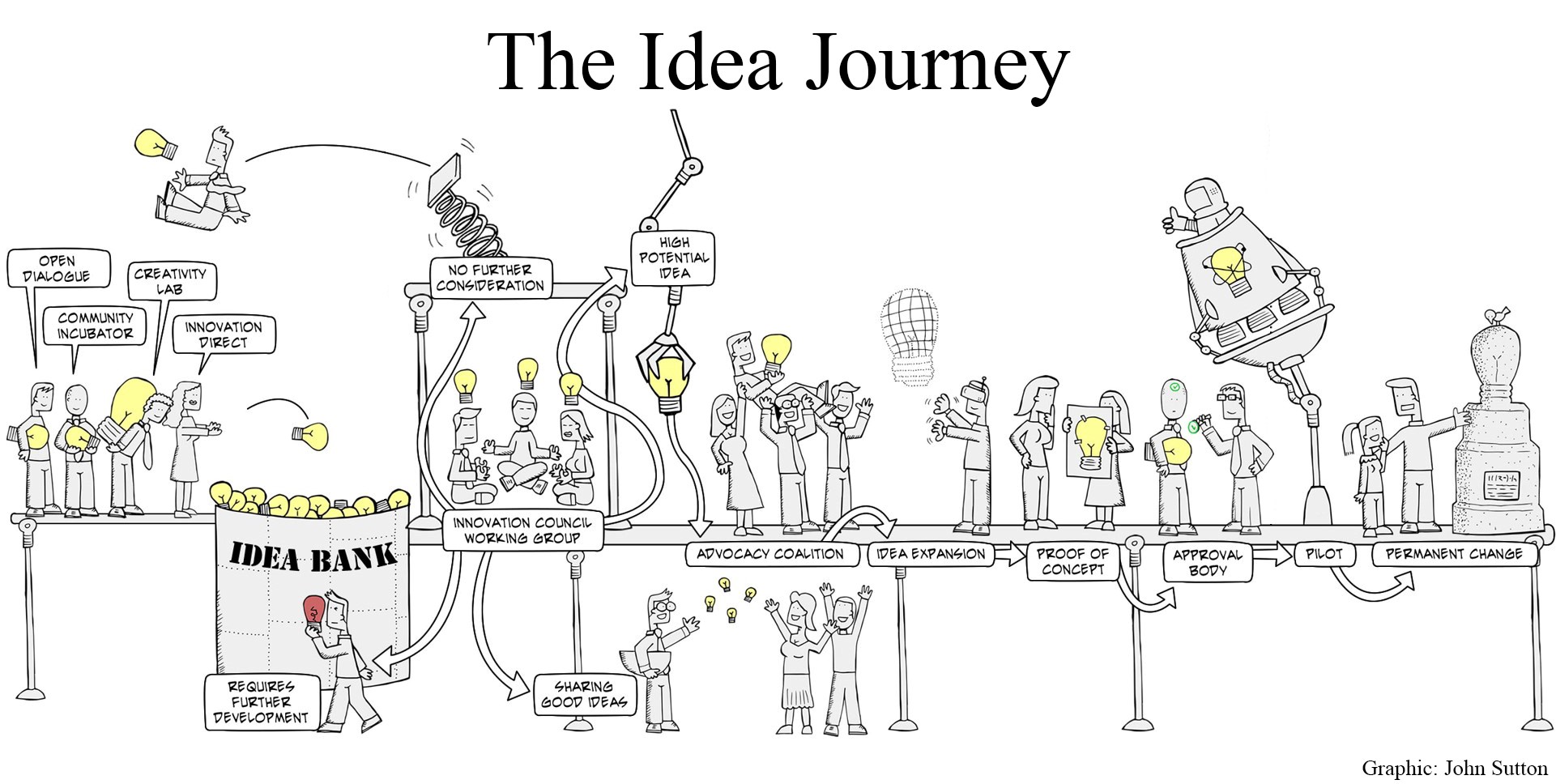Difference between revisions of "The Idea Journey"
Crystal.lin (talk | contribs) (Created page with " thumb On a warm Roman spring morning in 30 AD, a young man named Appius walked down the Via Sacra toward the Foro Romano. He had a bounce in his s...") |
Crystal.lin (talk | contribs) |
||
| Line 1: | Line 1: | ||
| − | [[File:Idea journey 2.jpg|thumb]] | + | [[File:Idea journey 2.jpg|thumb|center|1389x1389px]] |
On a warm Roman spring morning in 30 AD, a young man named Appius walked down the Via Sacra toward the Foro Romano. He had a bounce in his step as he anticipated the many discussions that would ensue when he got to the Basilica Julia, the grand hall in the centre of the Forum. The Basilica was the place where Appius went to hear about issues, proposals, and news from faraway places. He was excited to share his ideas with other smart minds. | On a warm Roman spring morning in 30 AD, a young man named Appius walked down the Via Sacra toward the Foro Romano. He had a bounce in his step as he anticipated the many discussions that would ensue when he got to the Basilica Julia, the grand hall in the centre of the Forum. The Basilica was the place where Appius went to hear about issues, proposals, and news from faraway places. He was excited to share his ideas with other smart minds. | ||
What Appius was a part of – almost 2,000 years ago – was not just a place where ideas could be exchanged and developed, but a broader culture of innovation that existed in Rome’s late republic and early imperial period. It produced some of the most staggering innovations in history. Well-known innovations, such as concrete or the arch, allowed for the building of now famous structures like the Pont du Gard aqueduct or the Roman Coliseum. The Romans created a culture where innovation was treasured. Leaders encouraged learning, valued knowledge, and rewarded accomplishments. They created a culture of prolific innovators. | What Appius was a part of – almost 2,000 years ago – was not just a place where ideas could be exchanged and developed, but a broader culture of innovation that existed in Rome’s late republic and early imperial period. It produced some of the most staggering innovations in history. Well-known innovations, such as concrete or the arch, allowed for the building of now famous structures like the Pont du Gard aqueduct or the Roman Coliseum. The Romans created a culture where innovation was treasured. Leaders encouraged learning, valued knowledge, and rewarded accomplishments. They created a culture of prolific innovators. | ||
Revision as of 17:05, 25 April 2019
On a warm Roman spring morning in 30 AD, a young man named Appius walked down the Via Sacra toward the Foro Romano. He had a bounce in his step as he anticipated the many discussions that would ensue when he got to the Basilica Julia, the grand hall in the centre of the Forum. The Basilica was the place where Appius went to hear about issues, proposals, and news from faraway places. He was excited to share his ideas with other smart minds.
What Appius was a part of – almost 2,000 years ago – was not just a place where ideas could be exchanged and developed, but a broader culture of innovation that existed in Rome’s late republic and early imperial period. It produced some of the most staggering innovations in history. Well-known innovations, such as concrete or the arch, allowed for the building of now famous structures like the Pont du Gard aqueduct or the Roman Coliseum. The Romans created a culture where innovation was treasured. Leaders encouraged learning, valued knowledge, and rewarded accomplishments. They created a culture of prolific innovators.

